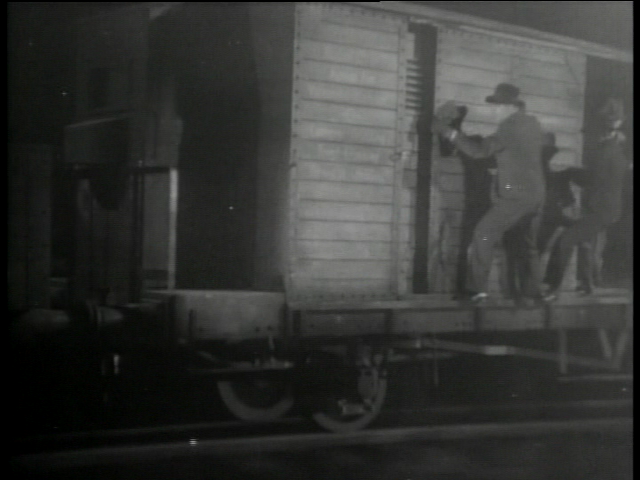“Ya don’t have to do nothin’ in this ‘ere house — ya stand still and things happen!”
|

Synopsis:
At a vacant house (“Number 17”), a detective (John Stuart) runs into a Cockney hobo (Leon M. Lion), a plucky girl (Ann Casson), and a gang of thieves searching for a missing diamond necklace.
|
|
Genres, Themes, Actors, and Directors:
- Detectives and Private Eyes
- Hitchcock Films
- Mistaken or Hidden Identities
- Play Adaptations
- Thieves and Criminals
Review:
Alfred Hitchcock’s self-described “quota quickie” (his last film made for British International Pictures) has been alternately criticized by reviewers as full of “half-baked plotting”, and lauded as a “magnificent specimen of pure cinema”. Neither assessment is entirely accurate, but together they touch upon both the film’s frustratingly murky script, and Hitchcock’s undeniably brilliant visual style. It’s well-known that Hitchcock was a fan of long sequences without words, and the opening shots in Number Seventeen — an atmospheric introduction to the titular “old dark house” — fit this description, with enormous shadows and unexpected run-ins effectively setting the stage for a plot full of secrets. Unfortunately, the source material (a stagy play, which Hitchcock finally “opens up” during the final train chase) leaves much to be desired. Its primary virtues — multiple mistaken identities and an enormous McGuffin — are also its downfall, as it’s difficult to keep track of the comings and goings of all the disparate characters. Nonetheless, unlike in Hitch’s oddly generic Jamaica Inn (1939), there are enough Hitchcockian elements here — including a decidedly black sense of humor — to satisfy diehard fans. It’s definitely worth a look.
Redeeming Qualities and Moments:
- Highly expressionistic lighting — particularly in the opening sequences

- The exciting final train chase

- Several “Hitchcockian” touches of humor — as when the camera flashes briefly on a roadside sign as a hijacked bus goes roaring by at breakneck speeds

- A surprise ending
Must See?
No, but Hitchcock fans will certainly be curious to check it out.
Links:
|
One thought on “Number Seventeen (1932)”
Not a must.
Nothin’ like a bit o’ style over substance, eh, wot, wot?
Hitchcock must’ve known he’d be moving on to better things. Great use of shadow and light; but a bit by-the-numbers here, guv’nor.
For cinema history ffs only.